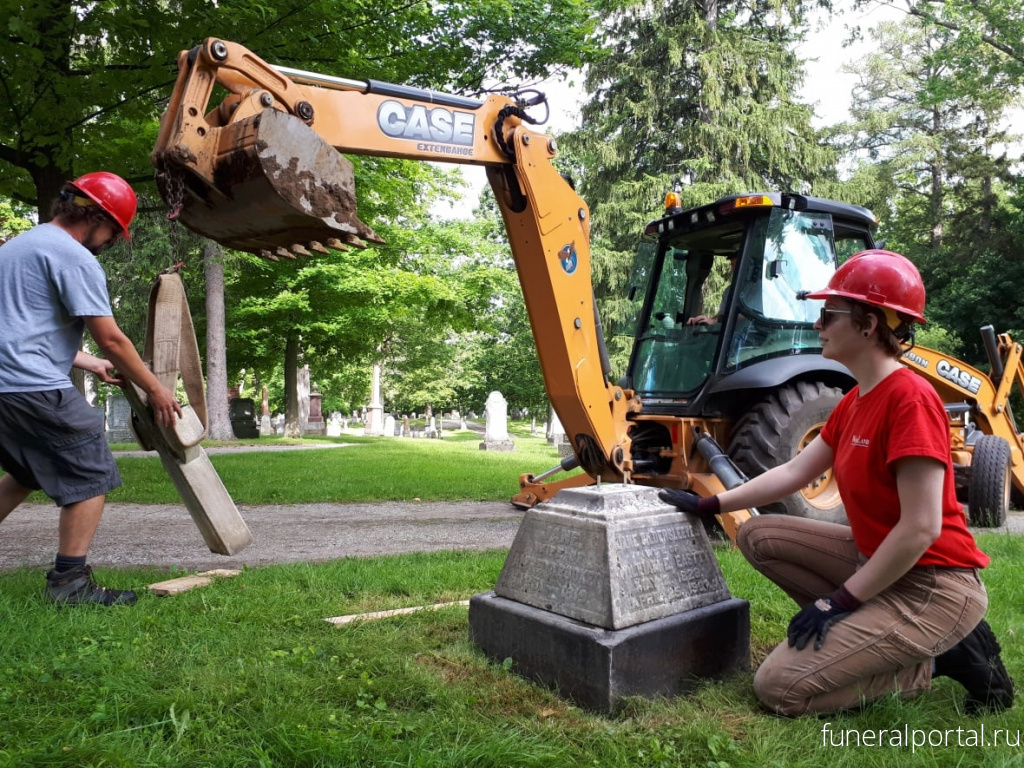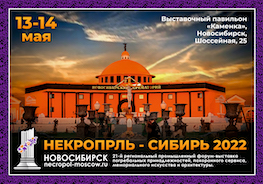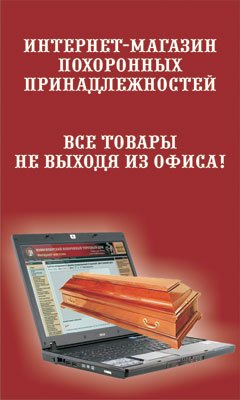'Cemeteries give us insight into the stories of people's lives' says Robyn Lacy
Cemeteries crammed with moss-covered monuments, crumbling headstones and worn-out benches are a common sight in Newfoundland, but they can often feel sombre and a world away from the traffic and rush of everyday life.
Folklorists and archaeologists, however, have an entirely different experience of these spaces and view burial sites as both living libraries and active laboratories.
Enter Robyn Lacy, a first-year PhD student in the archeology department at Memorial University, who, alongside her husband, has just launched a new company dedicated to cemetery preservation.
Black Cat Cemetery Preservation can conduct archeological surveys, map sites, evaluate structures and landscapes, and do all manner of restoration work on headstones.
Their approach to conservation is guided by the philosophy of doing as little harm as possible.
"Archeology, by its very nature, can be destructive. Contemporary archeology strives to be less invasive, so my aim is to teach people how to preserve these stones and spaces while doing as little damage as possible," Lacy said.
When it comes to cemetery care, Lacy stresses there are a lot of myths and misunderstandings. For one, the common practice of grave rubbing causes damages to headstones.
"The rocks react to pressure and rubbings make the stones fade and chip. I attended an online conference where an archeologist demonstrated how tourists had done rubbings at a famous grave in Sleepy Hollow, which damaged and eroded the stone over decades," Lacy said.
Lacy recommends bringing a flashlight or mirror to a graveyard if you're looking to read the epitaph. You can use the tools to reflect light and play with shadow, which should make the marker easier to read. Removing graveyard vegetation, power-washing, and scrubbing with anything other than water or D2 are all bad ideas.
"Something like ivy or lichen is embedded into the surface and is eating the rock. If you're trying to remove ivy, you're going to chip the stone and tear pieces off," said Lacy. "I tend to encourage people to just use water and a soft-bristled brush. If you need to use cleaner, I use D2, which is what the Smithsonian uses to clean monuments."

Besides restoration work, Lacy and her husband offer workshops and conduct research.
"Cemeteries give us insight into the stories of people's lives, and we can learn so much from epitaphs, iconography, the layout and landscape, and where the stone came from," she said.
Lacy has conducted research on burial sites around the world, but she has a special interest in Ferryland.
"Two gravestones from the 1620s have been discovered in Ferryland, but no graves have been located," she said.
"I spent my master's looking for the burial ground connected to these gravestones would have been in, but we did not find it. They are the oldest British gravestones carved in North America, those graves might have been washed out to sea, destroyed by construction, or are still out there waiting to be discovered."
Modern solutions
The work of folklorist and Ph.D. candidate Katie Crane also revolves around cemetery interpretation, research and preservation.
"I'm hoping to look at historic cemeteries in Newfoundland and Labrador and what I'm calling right now the 'heritagization' of them," said Crane. "I'm interested in studying how cemeteries are becoming sites of personal memorialization and increasingly as sites of community heritage and idealized pasts."
Alongside folklorist Dale Jarvis, Crane hosted workshops this past summer that taught groups how to use the app Billion Graves.
"This app helps safeguard cemetery information for other people and makes information publicly accessible. Billion Graves is a great app for this because all you need to do is take a picture. Then the data on the gravestone becomes publicly accessible and is transcribed using crowdsourcing," said Crane.
"This app uses the data to generate a map of the cemetery, which is great for not getting lost while doing genealogical research."
Crane says Newfoundland is in a state of flux regarding how we view graveyards.
"Years ago, I rarely came across folks who were interested in cemeteries as places of history, but now more and more groups seem to see the potential of these sites as either places of genealogical tourism or places worthy of historical interpretation," she said.
"To me, this indicates a recent change in how graveyards are perceived, and I think we're going to see an increase in graveyard tours, or cemetery documentation workshops that explain how to document epitaphs online."
Crane is all for this shift in thinking.
"Most people don't realize that the roots of the first city parks were graveyards. The Victorians used to spend time picnicking, reading, and just enjoying the green space of cemeteries instead."

Of course, there are plenty of guidelines for how to best enjoy graveyards as green spaces.
"People are injured and killed every year by toppling tombstones, so never lean on them," said Crane.
"You also need to respect the culture of a graveyard; obviously no littering, no loud voices, but I believe graveyards are living history and shouldn't be treated as roped-off spaces."
Mysteries and insignias
Some of Crane's favourite tombstones are the cast-iron ones found in Harbour Grace and Carbonear.
"The one in Harbour Grace belongs to a young Norwegian ship captain who died of illness while in port. It seems he was from a town that produced cast-iron, and the stone was shipped here."
The second cast-iron stone can be found in Carbonear.
"The story is that a child of a Roman Catholic doctor was buried in a Protestant cemetery, which angered the Protestant congregation. They waited until dark and destroyed the tombstone. The church was displeased, so they raised funds to purchase a stone that could not be damaged," said Crane.
"Cast-iron stones are rare, and I find them fascinating."
Crane also fields a lot of questions about graveyard symbology.
"You hear so much about the skull and crossbone graves of Harbour Main, but headstones with that symbol have nothing to do with pirates," she said. "Instead, they are related to [the concept of] memento mori, meant to remind others that we can't avoid death."
One mystery that has Crane intrigued has to do with a curious headstone in Port de Grave.
"Port de Grave has over 40 burial sites, which is fascinating for such a small town. There's one grave belonging to a young girl who died in her 20s. It was erected by the French consul at the time and 'several gentlemen in the estimation of her many good qualities,' which fascinates me," said Crane.
"I want to know who she was to get a stone given to her by such an important person."
Finally, Crane stresses that cemeteries have a natural life cycle.
"Without upkeep and even with upkeep, cemeteries have a life cycle, so it's important for folks to adopt a 'curated decay' mentality to graveyards and enjoy them at each stage of their life cycle," she said.
"It's beautiful when cemeteries are pristine, new, and manicured, but it's also beautiful when cemeteries are overgrown. Striving to return a graveyard to its pristine state by bleaching stones and ripping off vegetation does more harm than good."
Read more from CBC Newfoundland and Labrador
Andie Bulman. Andie Bulman is a chef, writer and comedian in St. John's.

Government of Newfoundland and Labrador. ARCHAEOLOGY IN NEWFOUNDLAND & LABRADOR 1987
https://www.gov.nl.ca/tcar/files/1987.pdf










